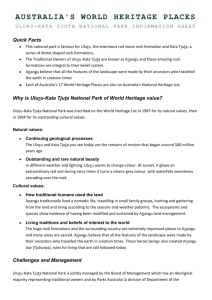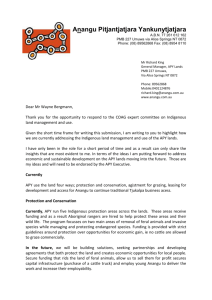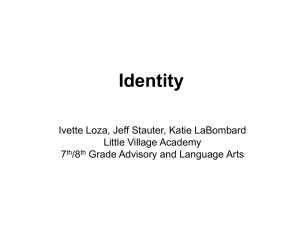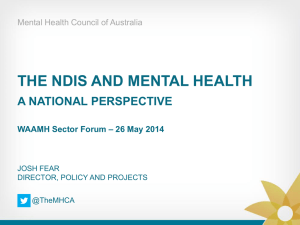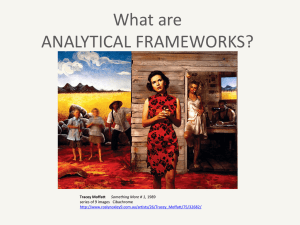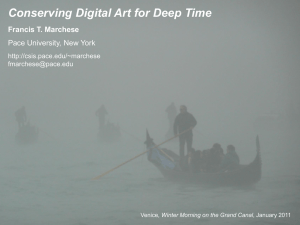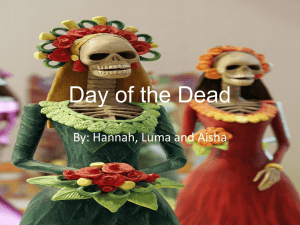NDIS rollout in APY Lands NDS presentation May 22
advertisement
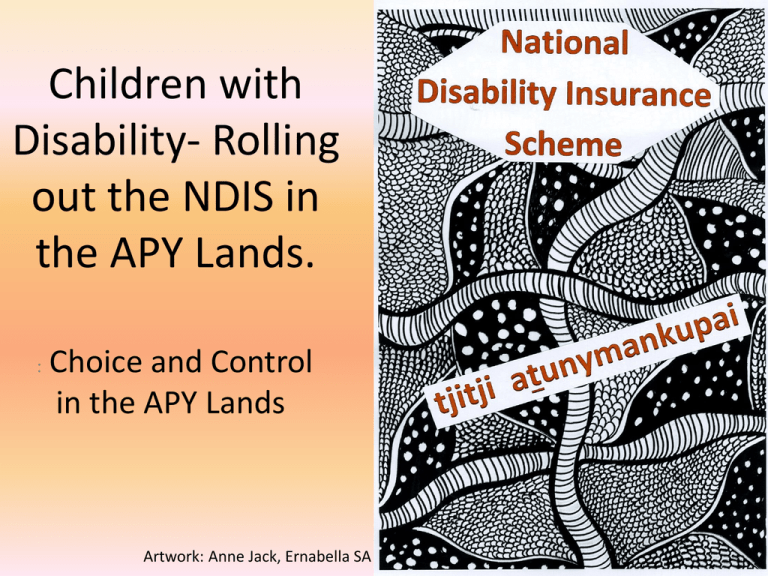
Children with Disability- Rolling out the NDIS in the APY Lands. : Choice and Control in the APY Lands Artwork: Anne Jack, Ernabella SA Health means respect for a way of life and culture. This means listening to the Aboriginal people, hearing their decisions, respecting their thought and values and making services available in a form appropriate to and determined by them. Nathan and Japanangka, Central Australian Australian Aboriginal Congress, 1983 • NDIS trial site: children in South Australia – 0-5 in 2013/2014 – 6-14 in 2014/2015 • NPYWC funded in initial year to work with NDIA in APY Lands – Inform people in community about the NDIS – Provide recommendations about a framework to support work with families and children – Develop an approach to increasing range and level of services available on Lands Artwork: Maringka Burton, Indulkana SA • Workshop with senior women from NPY area – Malpa – Informing community – Informing work – Developing resources Artwork: Margaret Smith, Imanpa, NT • Discussions with families in communities • Discussions with service providers • Community stalls talking about the new service • Guidance from NPY directors and NDIA People ask… “Where do you come from?” …And we know that the white people don’t understand. …..From all directions we are one family; from all directions we live in one country…. We are all of one land, and all of us have one law. Mantatjara Wilson Alice Springs 8 hrs Alice Springs 5 hrs 500 km Adelaide 1150 km Population approximately 3000 30 25 20 Artwork: Carlene Thompson Ernabella SA 15 10 5 0 0-14 15-24 25-34 35-44 45-54 55-64 65-74 75-84 85+ What matters to Anangu? • Statistics • Relationships – With family – With country – With culture Bonds between anangu and land can never be Tjukurpa, Mutitjulu broken while a person lives Community in Minyma Tjuta Tjunguringkula Kunpuringanyi • Video Clip – Lisa’s Story That is his country, his earth, his ground….In that land is his spirit. Tjukurpa kurunytja. His home is on his country and on his own land. That is because his kuuti – his spirit resides in that land. He has to live on that land. Within that spirit. Mutitjulu woman in ‘They might have to Drag me Like a Bullock’ Anangu are more concerned about being able to live in community, close to family, than about receiving ‘quality’ services and care- for themselves and their families • It is important to recognise that the standard of care which you or I might deem essential for an elderly person may well conflict with the priorities of an Aboriginal resident whose number one issue is to be assured of a peaceful life and death in their own country no matter how physically difficult • Harrison in Doolan, quoted in ‘They might have to Drag me Like a Bullock’ • As workers, we are at risk of trying to impose our values on anangu – e.g. prioritising hygiene, cleanliness and routine • May conflict with lifestyle choices when a person is placed in institutional care • How can the National Disability Insurance Scheme take account of this choice? • What have we learned from our community consultations? • What are the challenges of providing services and support to people living on the Lands? Artwork: Margaret Smith, Imanpa, NT Challenges • Cultural – Talking to families • • • • Questions Language Gender issues What is disability? – Blame and shame • parallel bars – Carers- ‘extended’ families • fluid… – Mobility- need a flexible response Artwork: Margaret Smith, Imanpa, NT • Cultural • Planning and Goals • Sharing and priorities • Environmental – Poverty – Loss and trauma • Child removals – Violence and fear – Limited literacy/ technology • Appropriateness of forms Challenges Artwork: Valerie Foster, WA • Logistics – – – – – – – Challenges Limited service provider options Relationship building Diagnosis – who assesses/ catching the wary Flexibility Worker support Infrastructure Cost Choice and Control • How do we increase ‘choice and control’ in this situation? – Not a mainstream situation with e.g. • Provider choice • Clients and families with defined long and short term goals • Sedentary lifestyles • We look at moving forward Artwork: Margaret Smith, Imanpa NT In a culturally acceptable manner To increase choice and control in the areas that matter most to anangu Working to develop goals relevant to anangu – Different from mainstream – Building relationships with clients and developing an understanding of personal goals rather than using a standard question/answer format Increasing choice and control in areas that matter most to anangu, enabling -living on country within family network -fulfilling obligations (sorry business, sharing) -participating in cultural activities Possible ways forward • Work through aboriginal organisations where possible – Consult and work with anangu • At level of FPDN and locally – Directors, malpa, community members • Start slowly and allow results to speak for themselves – Give LAC (and planner) time to develop relationships • Expand services currently working out there. • Work with individual packages and generic therapeutic services – Eg working through schools for children where a number have similar issues Next steps for this project • Planner to visit communities from time to timefirst visit last week – Take discussions with families and develop initial responses • Finalisation of report and recommendations – Work with NDIA to develop appropriate operational detail • Money, forms, processes…. • Presentation to NPYWC AGM • Contributions and suggestions welcome • Contacts: NPYWC Lee Ryall Kim McRae 89582345 NDIA Jo Wickes Meryl Zweck 1800 800 110 Despite what may be perceived by services as disadvantages in terms of environmental conditions and availability of services, • We need to remember the priority for anangu is to stay on the Lands This is their choice, – Living on country this is control – Living with family anangu want over – Living with culture their lives We need to work in a way that helps people achieve that choice
